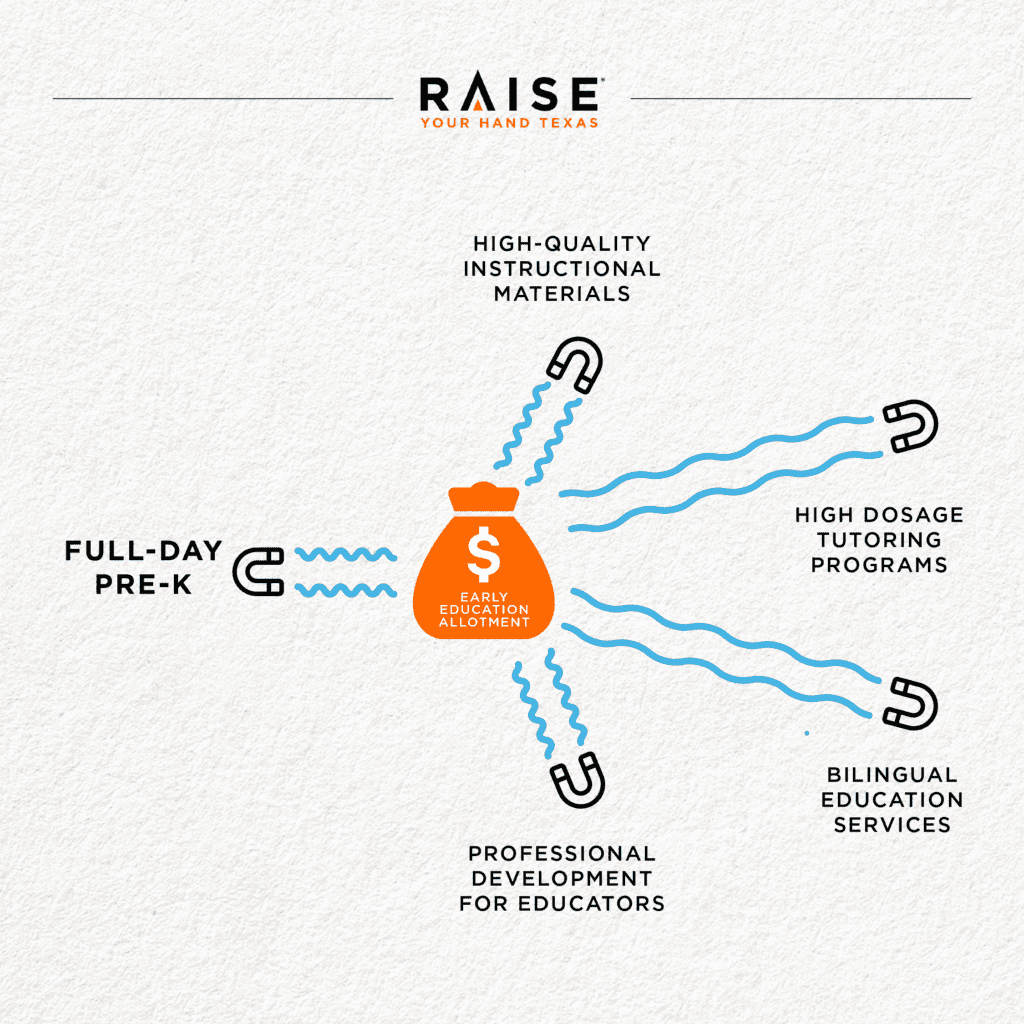
categories
89th Texas Legislators’ Pre-K Checklist

February 19, 2025
Texas children deserve a strong foundation for success. High-quality pre-K programs specialize in building the reading, math, and behavioral skills that students need.

Research proves that children who receive full-day pre-K thrive throughout the rest of their academic careers. Children who attend pre-K are well-equipped for kindergarten, they excel on 3rd-grade reading and math assessments, and they continue to achieve throughout high school, college, and their careers.
According to the Texas Education Agency (TEA), pre-K students improved their reading proficiency from 47% to 83% during the 2023-2024 school year. One year of pre-K boosts students’ motivation to read, phonological awareness, and recognition of letters and texts. And, a 2016 study of nearly 50,000 Texas students found that low-income children who attended high-quality pre-K were 40% more likely to pass the third-grade STAAR reading test, a crucial benchmark for student success.
As Texas legislators sit down to discuss the merits of fully funding pre-k during the 89th Texas Legislative Session, here is the checklist of priorities they need to take into consideration.
1. Fully fund full-day pre-K in Texas
In 2019, Texas showed up for early learning by passing House Bill 3. Specifically, this legislation expanded education access by requiring public full-day pre-K for four-year-olds and provided additional support for early learners by creating the Early Education Allotment. However, there is still more work to do with respect to supporting high-quality pre-K. For instance, students in full-day pre-K classrooms only generate half-day funding. This means that school districts have to use other funding sources to cover the remaining costs of pre-K; something they do not have to do for any other grade level.

While HB 3 did establish extra support for pre-K through the Early Education Allotment, school districts have too many critical needs to meet to put all of their dollars into full-day pre-K. There are various other early education strategies competing for Early Education Allotment funds, such as:
- High-dosage tutoring programs,
- Professional development for educators,
- Instructional materials, and
- Bilingual education services.
Texas trails the national average for pre-K funding by more than $3,000 per child. As a result of this funding gap, many school districts struggle to afford high-quality programs and retain excellent teachers.
The state requires school districts to meet various high-quality pre-K benchmarks related to curriculum, teacher qualification, family engagement, and more.
2. Expand pre-K eligibility in Texas
Right now, pre-K is not available to every Texan. The eligibility requirements significantly limit the number of children who qualify for public school pre-K.
In Texas, children are eligible to enroll in public pre-K if they meet at least one of the following requirements:
- Qualify for free or reduced-price lunch,
- Are homeless,
- Are in foster care,
- Have a parent on active military duty or who was injured or killed on active duty,
- Cannot speak or comprehend English, or
- Have a parent eligible for the Star of Texas Award.
Texas would benefit from expanding eligibility and giving more children the opportunity to attend public pre-K programs throughout the state. A family of four has to make under $58,000 per year to qualify for income-based eligibility; the median household income in Texas is $86,000. This excludes countless children whose families do not currently qualify for public pre-K, but also do not have the available resources to pay for pre-K elsewhere. Often included in this population are public school teachers with pre-K aged children.
3. Give Texan children a high-quality pre-K education
Investment and quality go hand-in-hand. Today, Texas only meets four of The National Institute for Early Education Research (NIEER) nationally recognized benchmarks for high-quality pre-K, which are:
- Early learning standards,
- Teacher degree requirements,
- Specialized training for early learning, and
- Health screening and referrals for children.

Texas misses the mark because it does not require a one-to-11 teacher-student ratio, a class size limit of 20 students, degree-holding assistant teachers, or a quality improvement system, among other factors.
Fully funding full-day pre-K guarantees success for all of Texas. The proven benefits of pre-K are clear, and it is time for Texas to invest in our youngest learners during the 89th Legislative Session. By adopting the pre-K checklist, Texas’ lawmakers can unlock new opportunities across the state and enact change for present and future generations.



